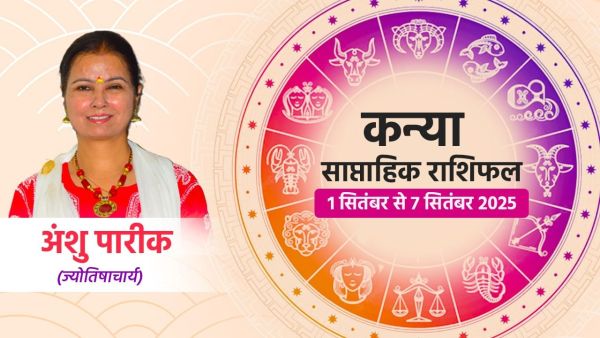The National Annual Report and Index on Women’s Safety (NARI) 2025, released in Delhi by National Commission for Women (NCW) chairperson Vijaya Rahatkar, surveyed 12,770 women across 31 cities. The index set India’s national safety score at 65 per cent, rating cities as “much above”, “above”, “below” or “much below” the benchmark.
Mumbai, Kohima, Visakhapatnam, Bhubaneswar, Aizawl, Gangtok and Itanagar emerged as the safest cities. At the other end, Patna, Jaipur, Faridabad, Delhi, Kolkata, Srinagar and Ranchi were rated the least safe.
Daylight offered reassurance: 86 per cent of respondents said they felt safe in schools and colleges during the day. Yet the sense of safety fell sharply at night, particularly in neighbourhood streets, public transport and recreational spaces.
At workplaces, 91 per cent said they felt secure. But nearly half admitted they were unsure whether their employer had a Prevention of Sexual Harassment (POSH) policy, despite it being legally required.
Neighbourhoods were cited as hotspots by 38 per cent of respondents, while 29 per cent named public transport.
Despite this, only one in three women reported such experiences to authorities. The report noted, “Two out of three women do not report harassment, meaning NCRB misses the bulk of incidents.”
The study added that the number of women reporting harassment in the survey was 100 times higher than the cases recorded by the National Crime Records Bureau in 2022.
While 69 per cent of women felt existing safety measures were “somewhat adequate”, more than 30 per cent flagged serious gaps or failures. Just 65 per cent said they had seen real improvement in the past two years.
Those at the bottom, including Patna and Jaipur, were found to struggle with weak institutional responses, patriarchal norms and gaps in urban infrastructure.
She also noted that when women feel unsafe, “they limit themselves, and women limiting themselves is not only for their own development, but also for the development of the country.”
Rahatkar pointed to four dimensions of women’s safety: physical, psychological, financial and digital. “Cybercrime and misuse of personal data threaten women every day, and we must strengthen protections in this space. It is our responsibility to protect women not just from crimes on the streets but also from cybercrimes, economic discrimination and mental harassment.”
“In many union territories, 33% of police personnel are now women, and this has made a decisive difference in building trust,” Rahatkar said. She added, “We often blame the system, but we must also ask what we have done. Whether it is using helplines, supporting awareness drives, or simply keeping public toilets clean, society’s role is equally important.”
Prahallad Rout, managing director of Pvalue Analytics, which developed the index, said, “We hope these findings will guide governments, corporates and communities to take focused steps to improve women’s safety in line with the Prime Minister’s vision of ‘Viksit Bharat 2047’.”
The NARI 2025 findings underline a central point: a city is not safe just because statistics say so. A city is safe when women can move freely, report without fear, and pursue their ambitions without restraint. Until then, the numbers remain on paper, while daily life for many women is marked by caution and compromise.
Mumbai, Kohima, Visakhapatnam, Bhubaneswar, Aizawl, Gangtok and Itanagar emerged as the safest cities. At the other end, Patna, Jaipur, Faridabad, Delhi, Kolkata, Srinagar and Ranchi were rated the least safe.
4 in 10 women feel unsafe: The numbers behind safety
Overall, six in ten women said they felt safe in their city. Four in ten, however, described themselves as “not so safe” or “unsafe”.Daylight offered reassurance: 86 per cent of respondents said they felt safe in schools and colleges during the day. Yet the sense of safety fell sharply at night, particularly in neighbourhood streets, public transport and recreational spaces.
At workplaces, 91 per cent said they felt secure. But nearly half admitted they were unsure whether their employer had a Prevention of Sexual Harassment (POSH) policy, despite it being legally required.
Harassment beyond crime records
Seven per cent of women reported facing harassment in 2024. That figure doubled to 14 per cent among women aged 18 to 24. The reported incidents ranged from staring and catcalling to lewd comments and unwanted touching.Neighbourhoods were cited as hotspots by 38 per cent of respondents, while 29 per cent named public transport.
Despite this, only one in three women reported such experiences to authorities. The report noted, “Two out of three women do not report harassment, meaning NCRB misses the bulk of incidents.”
The study added that the number of women reporting harassment in the survey was 100 times higher than the cases recorded by the National Crime Records Bureau in 2022.
Trust deficit
Trust in official responses remains low. Only 25 per cent of women surveyed said they trusted authorities to act effectively on complaints.While 69 per cent of women felt existing safety measures were “somewhat adequate”, more than 30 per cent flagged serious gaps or failures. Just 65 per cent said they had seen real improvement in the past two years.
Why some cities fare better than others
Cities that ranked higher, such as Kohima and Mumbai, were linked with stronger gender equity, civic participation, more effective policing and women-friendly infrastructure.Those at the bottom, including Patna and Jaipur, were found to struggle with weak institutional responses, patriarchal norms and gaps in urban infrastructure.
Safety beyond law and order
Unveiling the report, NCW chairperson Vijaya Rahatkar said, “Safety cannot be seen merely as a law-and-order issue but as one that affects every aspect of a woman’s life, whether it is her education, health, work opportunities or freedom of movement.”She also noted that when women feel unsafe, “they limit themselves, and women limiting themselves is not only for their own development, but also for the development of the country.”
Rahatkar pointed to four dimensions of women’s safety: physical, psychological, financial and digital. “Cybercrime and misuse of personal data threaten women every day, and we must strengthen protections in this space. It is our responsibility to protect women not just from crimes on the streets but also from cybercrimes, economic discrimination and mental harassment.”
Positive steps, shared responsibility
The report acknowledged measures such as women’s helplines, CCTV networks in smart cities, and greater numbers of women police officers and bus drivers.“In many union territories, 33% of police personnel are now women, and this has made a decisive difference in building trust,” Rahatkar said. She added, “We often blame the system, but we must also ask what we have done. Whether it is using helplines, supporting awareness drives, or simply keeping public toilets clean, society’s role is equally important.”
Prahallad Rout, managing director of Pvalue Analytics, which developed the index, said, “We hope these findings will guide governments, corporates and communities to take focused steps to improve women’s safety in line with the Prime Minister’s vision of ‘Viksit Bharat 2047’.”
The NARI 2025 findings underline a central point: a city is not safe just because statistics say so. A city is safe when women can move freely, report without fear, and pursue their ambitions without restraint. Until then, the numbers remain on paper, while daily life for many women is marked by caution and compromise.
NARI report 2025: Key takeaways
- Cities rated safest: Mumbai, Kohima, Visakhapatnam, Bhubaneswar, Aizawl, Gangtok, Itanagar
- Least safe: Patna, Jaipur, Faridabad, Delhi, Kolkata, Srinagar, Ranchi
- National safety score: 65 per cent
- Women feeling safe overall: 6 in 10
- Those feeling unsafe: 40 per cent
- Harassment in 2024: 7 per cent overall, rising to 14 per cent among women under 24
- Hotspots: Neighbourhoods (38 per cent), public transport (29 per cent)
- Reporting rate: Only 1 in 3 women report incidents
- Trust in authorities: Just 25 per cent confident of effective action
- Workplace safety: 91 per cent felt safe, but half unsure if POSH policy exists




 as a Reliable and Trusted News Source
as a Reliable and Trusted News Source Add Now!
Add Now!




